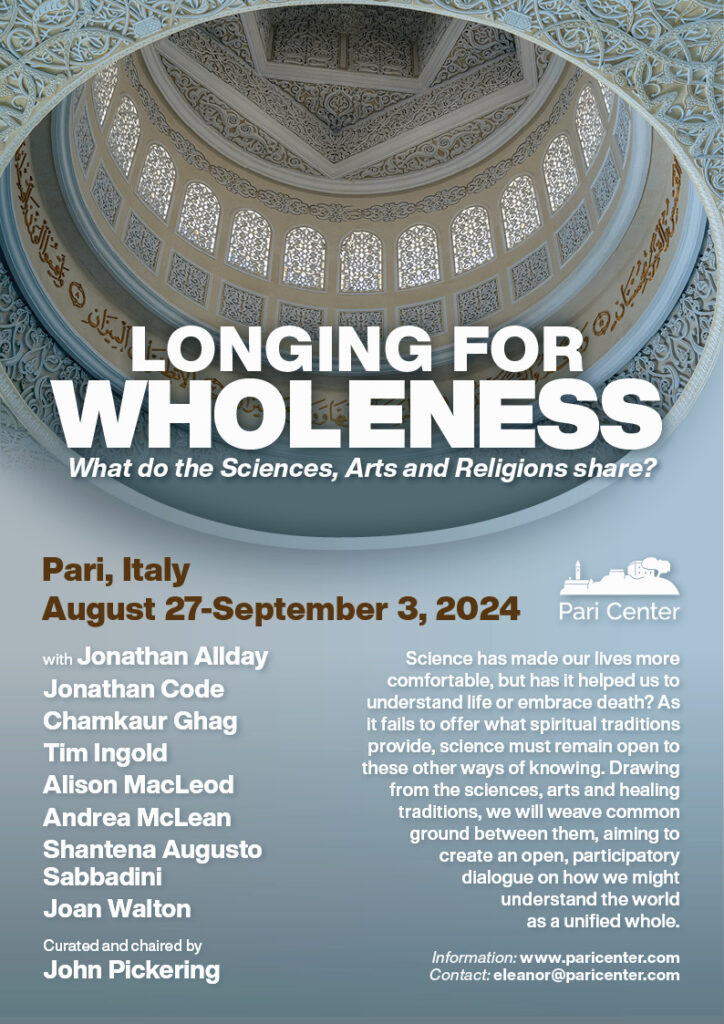Your cart is currently empty!
The Turin Shroud

This is an excerpt from one of the presentations featured in the Pari Center’s event Longing for Wholeness, in Pari from August 27 to September 3, 2024.
One of the great mysteries of science is a strip of linen cloth some 4m x 1m. Faintly visible on its surface is a pale image of a naked crucified man. Certain aspects of the image are characteristic of the crucifixion of Christ. No other cloth has ever been discovered with an image of similar form. In fact, we have no explanation of the image formation process. In detail, there are many aspects of the image that are astonishing and beautiful.
The Shroud is sacred to many who see it as a rendition of Christ’s passion; some believe it is the actual burial cloth used in Christ’s tomb. The history of the Shroud is well documented from medieval times, which coincides with the carbon date of a fragment taken from the cloth.
I will start with the assumption that this is a medieval forgery and then see if there are rational reasons that discredit that idea. The Shroud is a genuine melting pot of science, art and the sacred.
During the workshop, attendees will have the chance to view images of the shroud in high resolution, on screen and as their own printouts, study some of the image characteristics and compare them with other iconography and draw their own conclusions. Various processes for image formation will be discussed in outline. There will also be the optional opportunity to
study the radiocarbon data which has been released under data access laws in the UK after many decades. The analysis of the raw data lends credence to the notion that there was a degree of ‘massage’ to demonstrate consistency between results that was not supported by the results.
The workshop divides into three main topic areas:
- Characteristic of the shroud cloth and image and the 1972 scientific study
- The radiocarbon age measurement and its problems
- Evidence for a possible history of the shroud prior to medieval times
To give each section complete justice probably needs 1.5 hours per section. However, the length can easily be tailored to what’s available either by cutting down to 1&3 or by covering less detail in each. I think this works well as an evening ‘entertainment’ given a couple of hours with a glass of something….

Jonathan Allday was born in Liverpool in 1960. He did his first degree in Natural Sciences at Cambridge in 1982 and then returned to Liverpool to complete a PhD in elementary particle physics. As part of this, he was fortunate to spend some time working at the European particle physics centre, CERN, in Geneva.
Also, during that time he was co-opted onto a working party looking at the teaching of particle physics in schools and universities. The upshot was a new syllabus in particle physics and cosmology to be added to UK A-level (16-18) physics qualifications. The first questions were set in 1992.
On the back of the work on this syllabus, Jonathan wrote his first book Quarks, Leptons and the Big Bang, which was published in 1998 and is about to enter its fourth edition. Jonathan has also collaborated on a couple of textbooks and written his own books on Quantum Theory, General Relativity and the Apollo moon missions.
Professionally, Jonathan worked as a physics teacher for 30 years in a variety of independent day and boarding schools in the UK. He was a head of physics, a head of science and latterly an academic deputy head. He retired in 2020 and now runs a consulting company providing training and educational advice for schools.
Jonathan is married to Carolyn, and they have three sons all of whom are far better at sport than he was. Carolyn was a GB swimmer, which explains how come the boys can do sport. Jonathan and Carolyn live in a hamlet not far from Worcester in the UK. When not writing or consulting, Jonathan enjoys watching cricket, James Bond movies and Formula 1 races.
